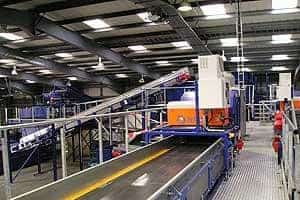In the study, published on Monday, WRAP found that in current market conditions, sorting recyclables at the kerbside was cheaper – net of income from material sales – than collecting them commingled.
The study used a MRF gate fee of £21 a tonne and that is just not the current market price – it's now substantially less
Ian Wakelin, Greenstar UK
The findings were welcomed yesterday by recycling officers and the Campaign For Real Recycling, which has been seeking an end to commingled collections (see letsrecycle.com story).
However, waste management experts with experience of both types of collection, said the findings “flew in the face” of the current market trend towards commingled collections – and that councils would not be choosing commingled collections if they were really much more expensive.
And, they questioned the way in which WRAP came to its results – through complex modelling rather than by using real, robust examples.
Richard Cutts, director of Community Waste, which runs a MRF in Milton Keynes, said: “The report is designed to help local authorities decide how to plan their collection strategies for the future but instead is giving misleading information which will hinder financial improvements going forward.”
“Even looking at the actual costs today with realistic figures inputted into the model such as correct lorry costs for kerbside vehicles, correct fuel usage, collecting exactly the same material mix (to include plastics and glass for instance) and an accurate gate fee the findings would be different.”
Mr Cutts explained that Community Waste charged a maximum gate fee of £10 a tonne for recyclables – a far cry from the £21 flat rate used by WRAP.
He said: “A modern MRF can operate at a gate fee of much lower than that stated in the report and surely this report should be concerned with advising what the future trends will be rather than historical or even what is believed to be current data.”
Greenstar
Ian Wakelin is chief executive of Greenstar UK, which has built an enormous materials recycling facility outside Birmingham and is responsible for running both commingled and source-separated collections.
Mr Wakelin welcomed the report as a “useful exercise as a benchmarking tool.” However, he said that by modelling the results, the findings were theoretical rather than actual – and therefore should not be used in decision-making.
In addition, he pointed out that the timing of the study was “incredibly poor” because MRF gate fees had been historically high due to a lack of capacity , while the price of recyclable materials was also high, swinging the study in favour of sources-separated collections which returned revenue for materials to councils.
He said: “The study used a MRF gate fee of £21 a tonne without glass and that is just not the current market price – it's now substantially less. Up until now there has not been the capacity so if you had it you charged a higher price. Over the last 6-8 months more facilities have come online and prices are coming down rapidly.”
Community Waste
He said: “That contamination would be in the residual waste volumes if it was not sent to a MRF so it would still be a cost to the local authority. That's a fundamental flaw”
He added: “These things are confusing for councils who have made very good efforts in increasing their recycling rates. WRAP is saying commingling is not good economically and we say that is not the case at all.”
Wide
Paul Dumpleton, Shanks director of material management, said that he was not surprised that the WRAP document was “well wide of the mark” after attending WRAP's presentation on MRFs last month in Birmingham (see letsrecycle.com story).
Mr Dumpleton pointed to a detailed study, carried out by industry five years ago and presented to a parliamentary select committee which found that there was very little difference between commingled collection and processing and source segregated collection and processing.
However, now, he estimated that commingling would in fact be cheaper.
He said: “In totality both methodologies netted about £100 per tonne but that was with commingled residue rates being in the high teens. Now that commingled residue rates are much lower and with dramatic increases in fuel costs it can only mean that the balance is tilted in no small measure towards commingling.”











Subscribe for free